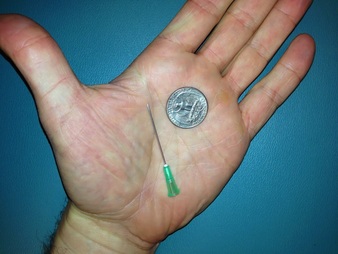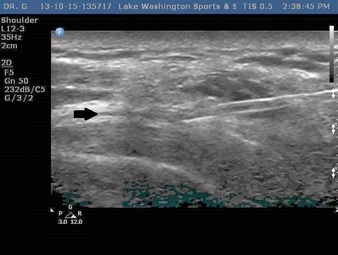There was a very interesting Freakonomics podcast I listened to today,
discussing the Japanese housing market.
In Japan, it is fairly routine for houses to
have a half-life of 30 years, and when a house is purchased, the owner often
demolishes the old home and builds a new one. There are some historical
reasons for this (e.g., many homes needed to be rebuilt after bombings in World
War 2, high frequency of earthquakes), but regardless of the reason, Japan is
unique in that homes are treated as a disposable property. Therefore,
unlike the United States or other wealthy nations, Japanese homes depreciate in
value after they are built.
This leads to a huge drag on the economy, and
has contributed to economic stagnation in Japan over the past 20 years.
The economics of this are pretty simple- when you take something that has
a high intrinsic value, but treat it like it is disposable, you are wasting
money. The money that is being spent rebuilding perfectly fine homes is
NOT being used elsewhere. There is an opportunity-cost loss.
This is not true in the United States, and it is
something we do better than Japan. When people buy a home in the United
States, they maintain it. They go to Home Depot and improve it. The
home gains in value. They realize it would be frankly insane to bulldoze
something worth a million dollars or more.
Japan was able to do fine when companies like
Toyota were thriving, but they were doing so in SPITE of their cavalier
attitude to disposing of homes, and once the rest of economy was stagnating,
those losses were hard to recover.
Bottom line: it is not in a society's best
interest to treat something of real intrinsic value as disposable.
This reminds me of a consulting problem one of
my MBA friends was telling me about, working for the United States Army.
He was consulted to figure to calculate "how much is one infantry
man overseas worth?" This was important for overseas missions,
because the support costs for a soldier are very expensive- building bases, you
need things like cooks, child care for families, gas to ship everyone and their
equipment overseas, etc. I think it worked out to about $1 million
per infantryman, which was a sufficient justification for the Army. If
something is worth $1 million, it's worth spending money to build an
appropriate support structure.
So .... listening to this podcast, and thinking
about the question about infantryman, it made me think "how much is a
physician worth?"
It's very clear to me that the societal trend is
"not very much." That's a mistake we are currently making in
the United States, treating physicians like disposable resources, similar to
the way Japan treats homes, and it's a very expensive mistake. Some
examples to that come to mind:
1. Valuing MBAs more than
MDs. If you look at the leadership of
most hospital organizations, they have MBAs in the leadership positions, and
they give the main decision-making capacity to the MBAs. I love MBAs, and
they have their role, but when non-physicians make health care decisions, they
tend to neglect important patient care issues. I'd be ok with, and
support, perhaps a 60%:40% split in MD-to-MBA leadership in health care.
I don't know what the actual numbers are, but I'd guess that the current
split if probably closer to 95% MBAs or other administrators, and a very small
amount of MD influence.
Same things are true for most national health
care panels. For things like the Affordable Care Act, physician input in
minimal. There may be a token physician on a panel of 15 people, but most
of the decision-making capacity goes to people representing pharma, the
hospital administrators, electronic health records, or policy makers.
2. Treating MDs as employee
worker bees, rather than as valued talent. A
colleague of mine relayed a story where the head physician of a large physician
group was mediating a conflict between one his best physicians and their
practice administrator, and the head physician commented that the practice
administrator was the "person who did the most for the practice."
The physician predictably left the practice, and the head physician did
not realize how offensive it was to de-value the work being done by the
physicians in the group. He viewed the administrator as the person who
"got stuff done", and the physicians were merely the worker bees
churning out widgets. As a patient, do you want to be cared for by an
organization who views you as a widget? Unfortunately, these stories are
common.
Similarly, one of my physician colleagues
belongs to a Rotary organization, and has noted how it's a wonderful
opportunity for thought leaders to gather, which gives them an opportunity to
think about big picture issues, develop a vision, and implement tactics as
their businesses evolve. He noted that there are thought leaders from
most industries other than medicine, but not that many physicians, and in
particular very few employed physicians. The physicians
who belong are private-practice owners, so they are coming in the capacity as
business owners, rather than as physicians per se.
Do you see what is happening?
In industries other than medicine, it is
recognized that the people with the most education and the most experience also
bring value to their organizations when they are given the freedom to think about
the big picture, mingle with like-minded colleagues, and develop as human
beings.
Current forces in place, however, are treating
physicians like interchangeable parts, whose role is mainly to push buttons.
I don't mean that metaphorically- physicians are literally being paid to
push buttons. There are requirements from CMS (the Centers for Medicare
and Medicaid Services, which is the Voldemort behind all negative changes in
healthcare) that physicians need to push buttons that verify they are using
their Electronic Health Record in a "meaningful way." These are
called "Meaningful Use" requirements.
It's time consuming, exhausting, and soul
sucking.
My colleague Brian White has put it well- "Medicine,
in its purest form, is a closed door with a patient and doctor talking to one
another." Anything that gets in the way ..... well, it gets in the
way.
So, how much is a doctor
worth?
I don't know. I'd like to think that we
have value, in many ways, comparable to that of an infantryman, which is $1
million. It may actually be much higher ....
As a thought experiment- take someone you knew
growing up who was in the top 5% of your high school class. Have them go
to a good college, and have them spend 4 years in a hard major, with challenging
elective classes, working hard enough to get a GPA of 3.6 or higher, and using
their discretionary time volunteering, doing research, and studying for the
MCAT.
Then have them spend ANOTHER four years taking
harder classes, in a pool of similarly competitive people, with their entire
lives dedicated to medical school. Add in the cost of not earning any
money (.... and keep in mind these were very good students, so they'd typically
get good jobs out of college), not saving for retirement, and all the opportunity
cost associated with them not entering the work force. Add in the cost to
their social life- delaying marriage, having kids. THEN add in about
$200,000 of debt, assuming they don't already have debt from college.
Then add in ANOTHER 3-6 years of residency
training. Factor in another 3-6 years of opportunity cost loss in delay
in entering the work force, the societal cost in having a very smart and
talented subset of people delaying family/kids/planting roots, and the interest
on the $200,000 of debt they are not yet able to pay off. Take into
account the opportunity cost loss that, had they gone into a field other than
medicine, this is when they would have been rising through the ranks, getting
promoted, and developing professionally.
Then add in ANOTHER year of fellowship training
for the most talented and ambitious subset of these physicians.
At this point- how much value does that person
have? One way to think about it- a schoolteacher, nurse, and physical
therapist all have lots of value, right? At this point, you have a
training time that is equal to all three of those professions combined, except
that you are starting with a group that had a more stringent set of baseline
requirements as an entry point.
All of that .... and that's before they even
start their career.
So, it wise to treat that as a disposable
commodity? What is the cost to society when, for example, a physician
decides to retire early because they are frustrated with compliance with CMS?
What is the cost to an organization when a physician walks way from their
practice because they feel undervalued? What is the cost to you as a
patient when someone chooses a career in finance instead of medicine?
The United States simply can't afford the cost
of treating physicians the way the Japanese treat homes. Physicians
have value, and systems built on undervaluing things with true intrinsic value
cannot sustain the opportunity-cost loss in the long term. It's like
taking a beautiful 12-year-old home and bulldozing it because you want a new
layout. It's better to focus on upkeep, improvements, and appreciating
what you have.
In search of a better way:
We here at Lake Washington Sports & Spine
think that there is a better way. All of the societal forces that are in
place that devalue the importance of a physician- that's simply not the way we
do business.
Everything we do here is built from our vision-
"helping our patients be the best possible version of themselves every
day, using the musculoskeletal system as a guide."
Why do we keep our billing and coding person Natalie in house? Because it provides
a better experience for the patient.
Why do provide information about exercise on our
blog? Because it provides a better experience for the patient.
We value our physicians, not just because we are
the owners, but because we believe that if we value EVERYONE on the team, it
allows us to provide a better experience for the patient.






